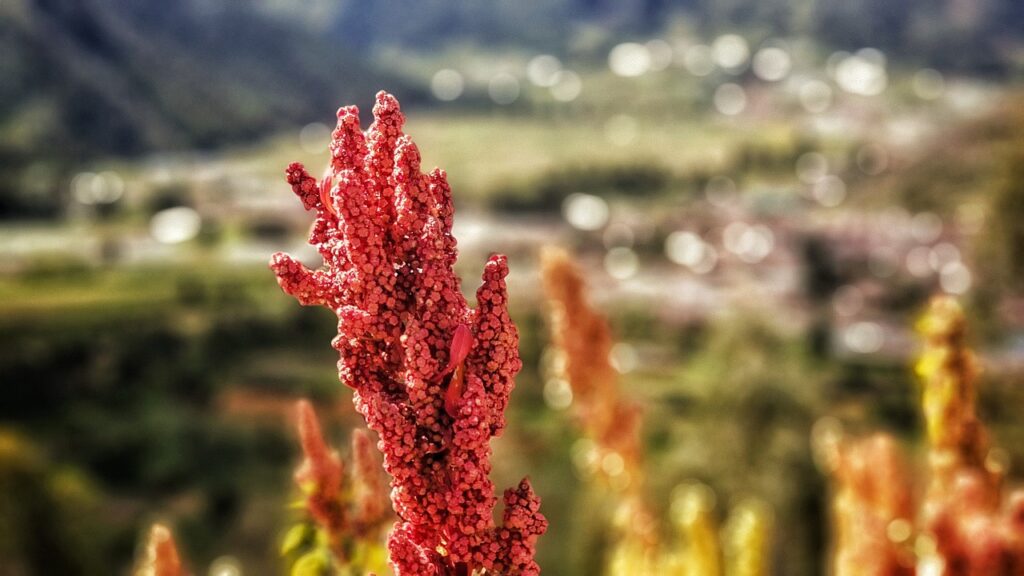Origin and particularities of quinoa |
Quinoa, also known as quinoa, is an ancient plant with roots in the Andes, specifically in areas near Lake Titicaca, on the border of Bolivia and Peru. In South America it is also grown in Chile, Colombia, Ecuador and Argentina.
More than 5,000 years old, this Andean treasure, whose scientific name is Chenopodium quinoa, has transcended borders and has become a crop on a global scale, with a presence in countries such as the United States, Mexico, Spain, the Netherlands, England and various Asian nations.
Originally from the Peruvian and Bolivian Andes, quinoa has adapted to extreme climates and is grown between 2,500 to 4,000 meters above sea level. Although 92% of the crop is concentrated in Peru and Bolivia, another 70 countries have also adopted this extraordinary plant, appreciating its benefits and nutrients.
The Chenopodium quinoa is an ephemeral plant with broad leaves that can reach impressive heights, between 0.5 and 2.5 meters. Its flowering, prior to seed formation, is a distinctive phenomenon, with red-hued flowers clustered in spikes at the end of the stem. The seeds, the jewel of quinoa, vary in color and size, offering options ranging from white and brown to red, black and gray.
Cultivation and care
The cultivation of quinoa requires specific considerations, such as the control of weeds, which often compete fiercely with the plant. Also certain insects such as aphids can cause damage, the impact of which can be a serious detriment when the plants are younger, i.e. weaker. When they reach sufficient maturity, they can withstand damage without problem.
Despite its initial slow growth, once it reaches 30 centimeters, quinoa undergoes rapid development until it becomes practically self-sufficient. Growing it is not a difficult task, but ample land and a suitable climate are needed to ensure a successful harvest.
Nutritional properties: more than a cereal
Quinoa distinguishes itself as a pseudocerealproviding most of its calories in the form of complex carbohydrates and offering approximately 16 grams of protein per 100 grams.
Compared to most cereals, quinoa has a higher content of fats and proteins, especially unsaturated, including omega 3 and omega 6 acids. In addition, its fiber content, reaching up to 15 grams per 100 grams, makes it an exceptional choice.
Outstanding benefits
The versatility of quinoa makes it suitable for special diets, since it does not contain gluten, making it ideal for people with intestinal problems.
With a low glycemic index, it is a valuable choice for those seeking to control diabetes or lose weight in a healthy way. Quinoa also excels at controlling cholesterol levels, thanks to its fiber and unsaturated lipids, combating constipation and serving as a vegetable source of iron.
In summary, quinoa is not only an ancestral Andean food, but a nutritional treasure that has conquered palates and cultivated fields around the world. Its rich history, unique characteristics and health benefits consolidate it as an indispensable element in the modern diet.





